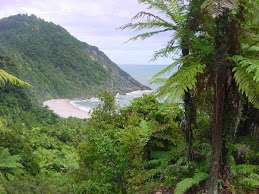 This small book (63 pages) by Thich Nhat Hanh 'on the full awareness of breathing' is amazing for its simplicity (in most sections) and easy-to-apply exercises.
This small book (63 pages) by Thich Nhat Hanh 'on the full awareness of breathing' is amazing for its simplicity (in most sections) and easy-to-apply exercises.Some gems
- Breathing affects our mind and our mind affects our breathing.
- Breathing is an aspect of the body and awareness of breathing is awareness of the body.
- Breathing is an excellent tool for establishing calmness and evenness.
- The mind's functions include feelings and perceptions. When we are aware of every bodily and mental action, we are aware of every feeling.
- Calmly abiding in the present moment, immense joy arises.
- Focus the mind at the tip of the nose and be aware of the first moment of contact of air at its place of entry into the body.
- Gradually the rough uneven breathing will become delicate and subtle. Finally all discrimination will disappear.
- You will then feel fresh, light and at ease.
- Follow this sign and you will enter concentration.
1: Following the breath in daily life (methods 1-2)
3. Awareness of the body - unity of body and mind (method 4)
4: Nourishing ourselves with the joy of meditation (methods 5-6)
5. Observing the feelings (methods 7-8)
Every time you practise a sitting meditation, you should begin with 1 and 4.
Every time you notice your state of mind becoming agitated, dispersed, ill at ease, you should practise 5.
Methods 1-2
As you do things in daily life, say 'I am breathing in and ...' (this can be difficult unless you take deep breaths, not a bad thing to be forced to do). This means combining full awareness of the breath with movements of the body. Stopping both the random progression of thoughts and living in forgetfulness is a giant step forward in meditation practice. Use this method to harmonise your breathing.
Method 4
Be aware of 'the body in the body' (sounds weird but this wording is a way to remind yourself that you are not separate from your body, that is, you are not subject and object - separate - but one with your body). The mind does not stand outside of the object to observe it. When you breathe in, the air enters your body and calms the cells of your body. Each cell of your body becomes more peaceful and so do the cells of your mind. This method brings calmness to your body, breathing and mind.
Methods 5-6
At the end of the day, light a stick of incense, sit cross legged, and practise breathing with a half-smile.
'I am breathing in and feeling joyful, I am breathing out and feeling joyful. I am breathing in and feeling happy. I am breathing out and feeling happy.'
Set aside the stress and complications of your day! You only need to be aware of the existence of happiness to have it immediately. You can transform neutral feelings into pleasant ones, and nourish yourself. When we are nourished constantly by the happiness of meditation, we become at ease with ourselves and others.
Methods 7-8
When you have a feeling (either good or bad, pleasant or unpleasant), see that you are this feeling (eg I am this irritation) in the present moment. Treat this feeling with compassion and non-violence. Face the feeling with a heart filled with love. Every feeling is a field of energy. Under the light of awareness, an unpleasant feeling can be transformed into an energy which nourishes.
Feelings originate either in the body or our perceptions. The practice of full awareness is to look deeply to see the true nature of everything and go beyond our inaccurate perceptions.
- If we keep our body in good health, we can diminish painful feelings that originate in the body.
- By observing each thing clearly and opening the boundaries of our understanding, we can diminish painful feelings that originate from perception.
My thoughts
This is by no means the whole of this great little book, and I haven't put the actual methods here as I've probably plagiarised the book enough!
Years ago when I became aware of the shallowness of my breathing, I somehow realised that the breath is key to much of our lives. Apart from just keeping us alive, it can slow us down (crucial now that we are so speedy in the western world) and can help to keep us in the present moment. It is a challenge, however, as it is involuntary and as such we don't pay any attention to it, unless for some reason (eg fear) it changes dramatically. This book gives you the chance to practise some simple exercises that bring it more to the conscious mind. Worth cultivating...
It is an ideal hand luggage book that I have with me at all times - on public transport etc. I feel as though I am studying it, as I pick it up and read a bit of it to keep mindful about the practices. I've never done this before with a book, but it is very effective!


